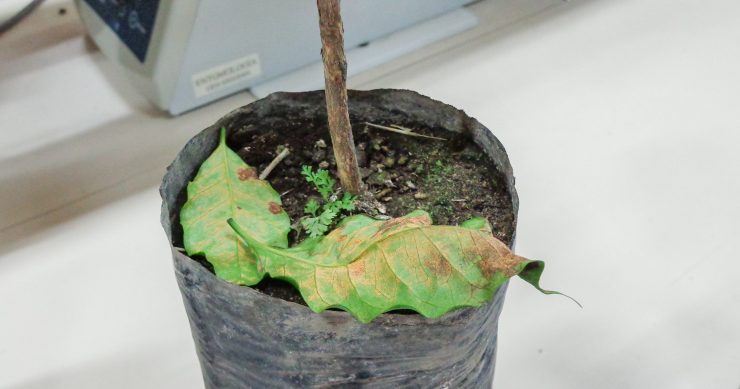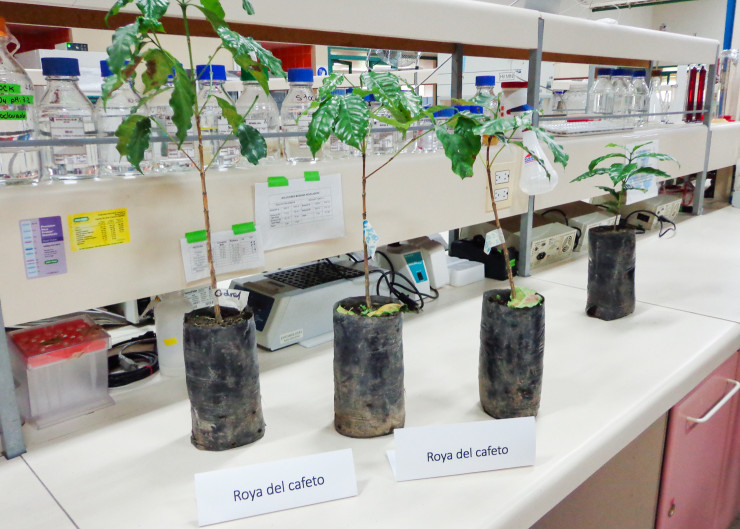About a year ago, we unveiled the shocking coffee leaf rust facts every coffee lover should know. This week, agreements and commitments resulting from the UN Climate Change Summit garnered applause from some fronts and criticism from others. While coverage of large milestones in addressing climate change is important, the media orgies spawned by such major meetings often overlook what researchers, scientists, and agronomists are doing in the field or a laboratory to find ways to address the very real, usually localized, effects of climate variability. Coffee farmers experience the struggles of climate variability first hand, and we wanted to take a closer look at how the science of climate change intersects with the realities of the coffee industry.
Through the Association for Science and Information on Coffee (ASIC), scientists have been sharing research related to coffee quality with each other for more than 45 years. The earliest meetings focused on many themes still present at ASIC today, namely the effects of coffee on human health and research progress on assessing and improving quality from green bean to roast to extraction techniques. Agronomy only emerged as a category in its own right with the seventh biannual meeting, and the phrase “climate change” first appeared in an abstract title only six years ago.
Despite models predicting the extinction of Coffea arabica within 70 years, there are hundreds of people working to keep coffee viable as a commercial crop. While by no means an exhaustive list, here are six facts to give you a sense of their progress:
1. Leaf rust is just one of the problems facing coffee.
About 1/3 of abstracts that mentioned coffee leaf rust (CLR) at ASIC 2014 also mentioned other problems facing coffee crops. In the more than 30 summaries that fit that category, coffee berry disease was the next most frequently mentioned issue. Increased temperature ranges, drought, coffee leaf miner moths, coffee wilt disease and other climate driven challenges also turned up in my survey of the more than 300 pages of research abstracts.
2. Plants manage to fight 5,000 different diseases.
This revelation came from Richard Visser, the head of the plant breeding program at Wageningen University. Visser described how identifying the effector genes many plant diseases use to keep many different species of infected plant alive might lead to new ways to breed for more durable disease resistance in coffee. If such genes can be silenced, a disease like CLR would be unable to access the cell replication or nutrition mechanisms in the host plant that it needs to survive.
3. Field trials for coffee breeding programs take 2-7 years.
It can take a long time for coffee breeding programs to show results, so anything that can help speed up selection for desired characteristics before trees are planted is very valuable. This is one reason why the continuing research to develop more coffee gene references is so important.
4. A Department of Agriculture project in Thailand identified 17 hybrid seedlings that may have resistance to coffee leaf rust.
Breeding programs for combatting rust and other diseases are starting to show some promising results. This is important progress given the fact that the Centro de Investigação das Ferrugens do Cafefiro has confirmed that species of CLR that have not previously been identified are starting to emerge.
5. The Tanzania Coffee Research Institute has released 23 coffee varieties with resistance to coffee berry disease, coffee leaf rust, or coffee wilt disease.
Coffee leaf rust may be the most publicized threat facing coffee at the moment, but scientists continue to work on developing new varieties that address the multitude of challenges facing coffee production. Four of the new lines from Tanzania are “compact hybrids” bred to have a better chance of withstanding water stress.
6. More than 2,700 farmers have already been reached by the Initiative for Coffee & Climate.
The Coffee & Climate Initiative is building “a publicly available online platform which will give farmers and extension agents access to best practice examples, guidelines, training material, as well as the latest scientific discoveries.” With “about 25” tools now available, anyone can follow the progress as they are used in four pilot regions, helping to share best practices for combating the challenges of climate change globally.
Jenny Neill is a Sprudge contributor based in Seattle. She writes about beverage and travel at jennyneill.com. Read more Jenny Neill on Sprudge.



